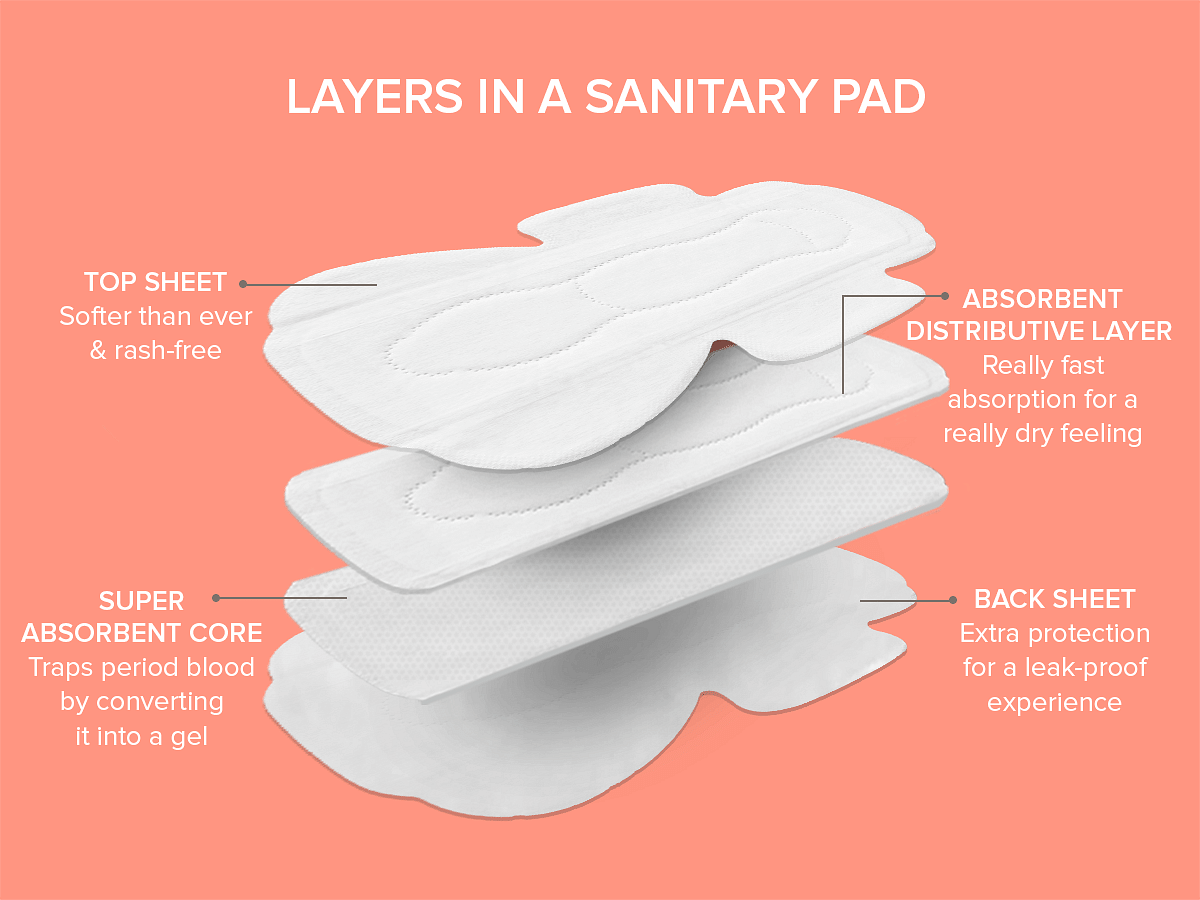In older times, when women menstruated, they had to manage their period flow innovatively. They use animal skin, vegetable peels, grass and even wood! When newer fabrics came into the market, women began to prefer softer ones like mulberry paper. Trace the complete history of a sanitary pad here.
Slowly but surely, modifications were made to these makeshift pads to create the sanitary pad as we know it today. At Nua, we took it a step further with feedback from over 10,000 women from our community to create a pad that is designed by us, and co created by you.
How does a sanitary pad work?
A sanitary pad has a top sheet that is soft and helps keep the skin around the vulva dry. Underneath, there is an ‘absorbent distributive layer’ that transports blood from the surface of the sanitary pad to the ‘super absorbent core’. What this does is absorb menstrual fluid and store it under pressure by converting it into a gel. If you cut open a sanitary pad, you will notice small crystals under the fabric. These crystals are what carry out the scientific magic!
The super absorbent core is protected underneath with a back sheet. The back sheet is waterproof and comes with an adhesive and a release paper which allows you to stick the sanitary pad on to your underwear. This adhesive under the release paper holds your sanitary pad in place.

How can you use a sanitary pad?
Most sanitary pads come with instructions on how to properly use them. The overall idea is to ensure it is placed properly to avoid leakage and make sure menstrual hygiene is safely maintained. Sanitary pads are the safest way to maintain period hygiene. Unlike other products in the market, it is not invasive (they are not inserted inside your body). You can find everything you need to know about a sanitary pad here.
Can there be side effects of using a sanitary pad?
At Nua, we want your menstrual experience to be comfortable and toxin-free. Our pads are made safely, with no toxins and come in different sizes! This way, you can use a larger pad for heavy flow days and save smaller pads for other days of your period. When in doubt, don’t forget to consult a gynaecologist if you need to.
How and when can a sanitary pad be disposed?
Ideally, it is recommended that you change your sanitary pad once every 4-6 hours. DO NOT FLUSH YOUR PAD! Once you are ready to change your sanitary pad, gently unpeel the pad from your underwear and wrap it with a disposal cover. This conceals period odour and makes the process of disposal more hygienic.
Used sanitary pads are either buried in landfills or incinerated, which are not ideal solutions. When buried, the sanitary pad can take close to 500 years to decompose. When incinerated, toxic fumes are released into the atmosphere. This is why you should be mindful of how you use and dispose off a pad in the most hygienic way.
Over the last five years, Nua has listened to your menstrual problems and innovated ways to make your menstrual experience more comfortable and easy. Check out all our solutions here.



